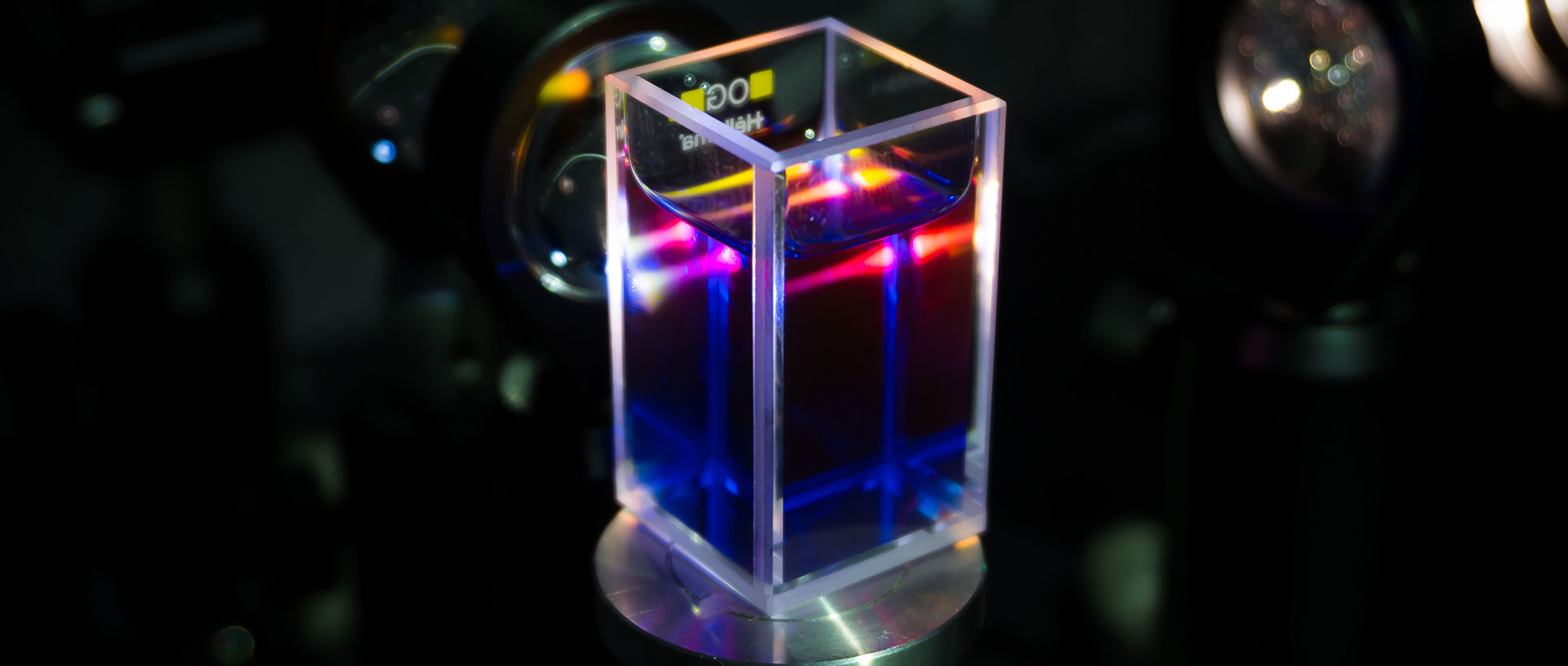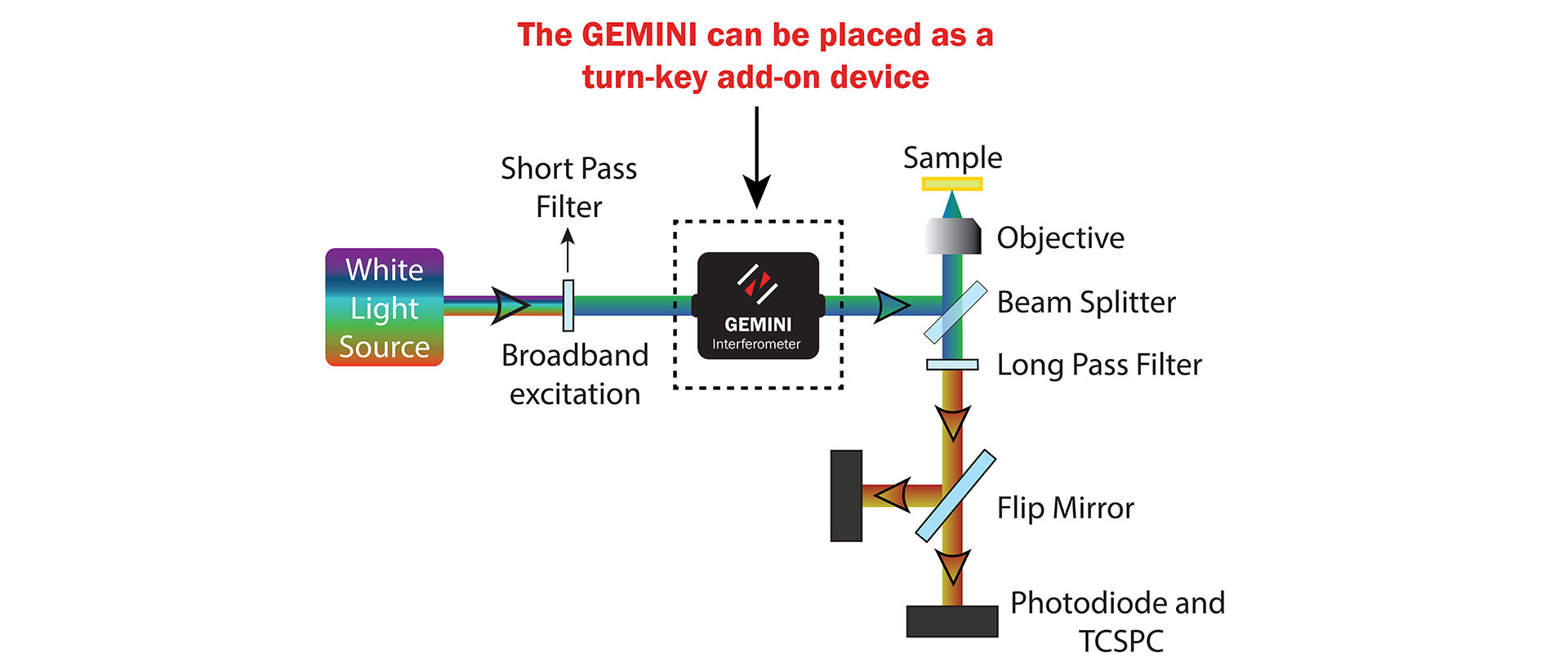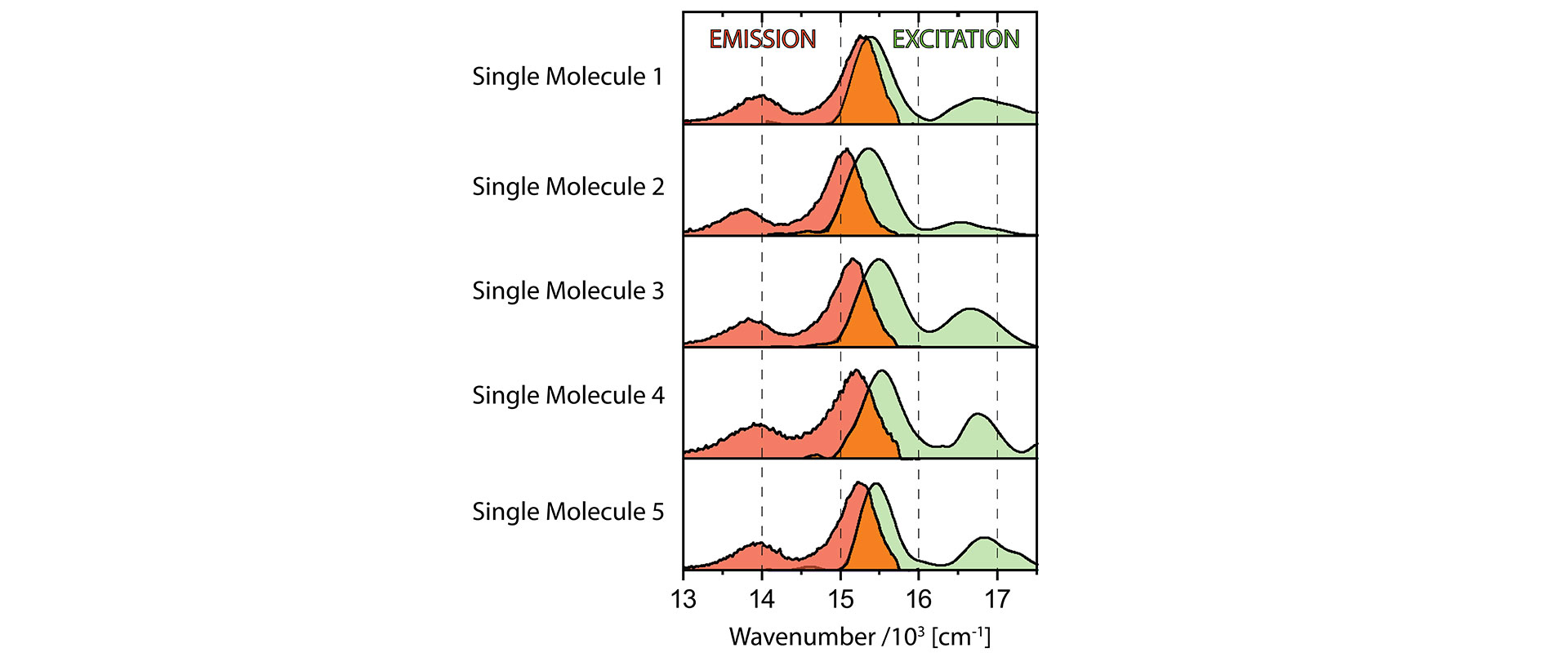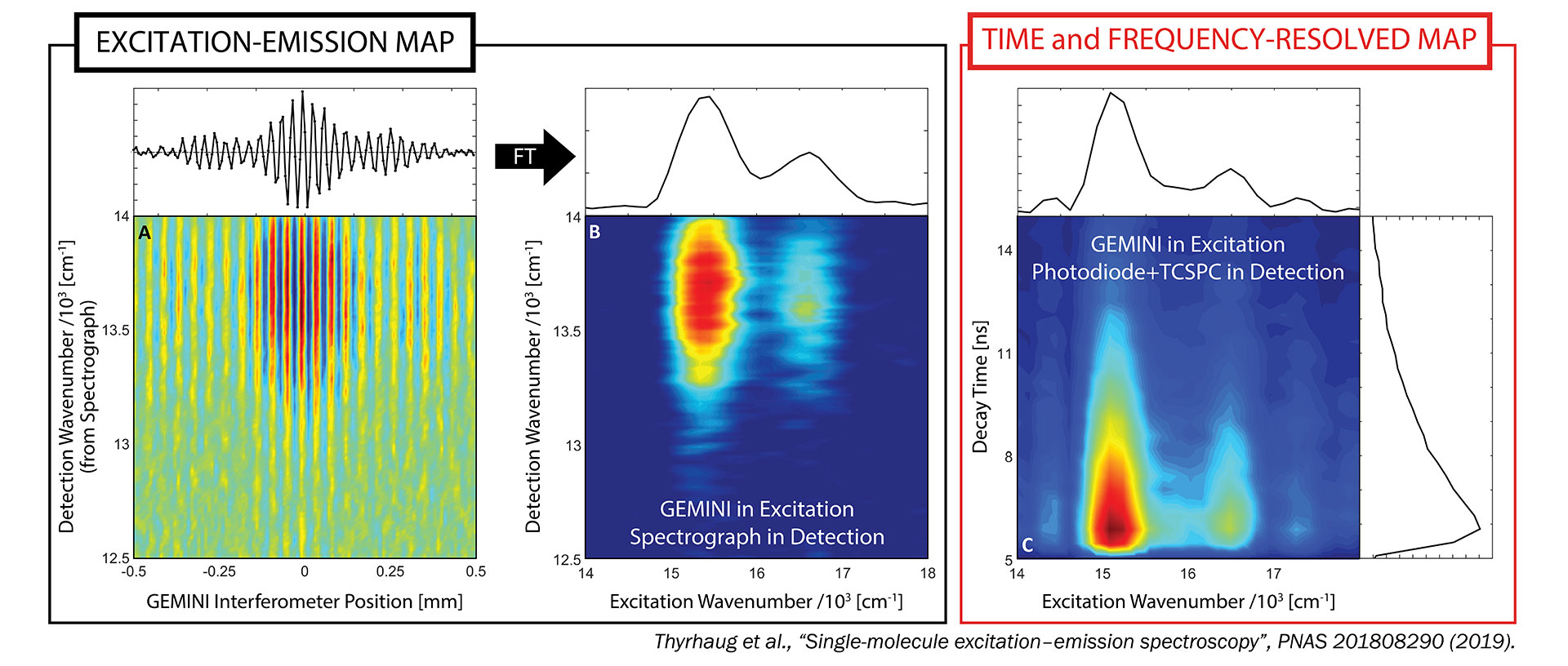20.02.2019 17:00
New fluorescence characterisation experiment on isolated molecules
The work of an international team comprising three Politecnico di Milano researchers published on the Proceedings of the National Academy of Sciences (PNAS)

When ISTAT provides us with average information on the Italian population, such as average income, age, weight and height, we often do not find ourselves reflected in that, since each one of us is different from the others and hardly ever in line with the average of the rest of the population. The same is true for molecules in chemistry. When we measure a macroscopic sample, even when it contains but a single chemical substance, each molecule will be slightly different from the others, as their three-dimensional shape varies. Molecules, in fact, are not stiff rods: they can rotate and bend a little. It follows that what is actually measured is an average of the various shapes. The measurement of isolated molecules, instead, can tell us what is the shape of every one of them and can accordingly acquaint us with a great more deal of information that in average measurement remain hidden.
An international teach of researchers, including Giulio Cerullo, Dario Polli and Antonio Perri from the Department of Physics of Politecnico di Milano, successfully characterised the properties of individual isolated molecules through the fluorescence they emit. Fluorescence is that light we see, for instance, on our white clothes when inside a disco they are illuminated by ultraviolet lamps or the one that casts a green light on the clock hands at night.
The measurement achieved is technically quite difficult: imagine how small a molecule is, and, therefore, how little fluorescence light it can emit. The researchers placed it in the dark under a microscopy and lit it up with flashes of light: out of 100 flash shots, 99 times the molecule would not respond at all, and once it responded by emitting a single photon. A single photon is very little: just think that during the day our eyes normally receive millions upon millions of photons in one second only. By collecting these photons of light emitted by a single molecule, we can obtain precious information on its peculiar shape.
Image 1: Experimental Setup for Time- and Frequency-resolved fluorescence.
Image 2: Representative selection of Single Molecules excitation and emission spectra. Significant variations in transition energies, linewidths, and Stokes shifts are observed.
Image 3: Single Molecule interferogram (A) and relative Excitation-Emission Map (B) obtained via Fourier Transform (FT) along the x-axis. (C) Excitation-energy versus emission-intensity decay for a single molecule constructed from an interferometric TCSPC experiment. Sample: Terrylene diimide derivative
The work has been published on the prestigious Proceedings of the National Academy of Sciences (PNAS) journal, organ of the US National Academy of Sciences. Besides the Department of Physics of Politecnico di Milano, participants included the Technical University of Munich, which proposed the study and carried out the simulations, and the University of Copenhagen, which conducted the experiments.
Find out more:
Single-molecule excitation–emission spectroscopy
Erling Thyrhaug, Stefan Krause, Antonio Perri, Giulio Cerullo, Dario Polli, Tom Vosch, Jürgen Hauer
Proceedings of the National Academy of Sciences Feb 2019, 201808290
https://doi.org/10.1073/pnas.1808290116




